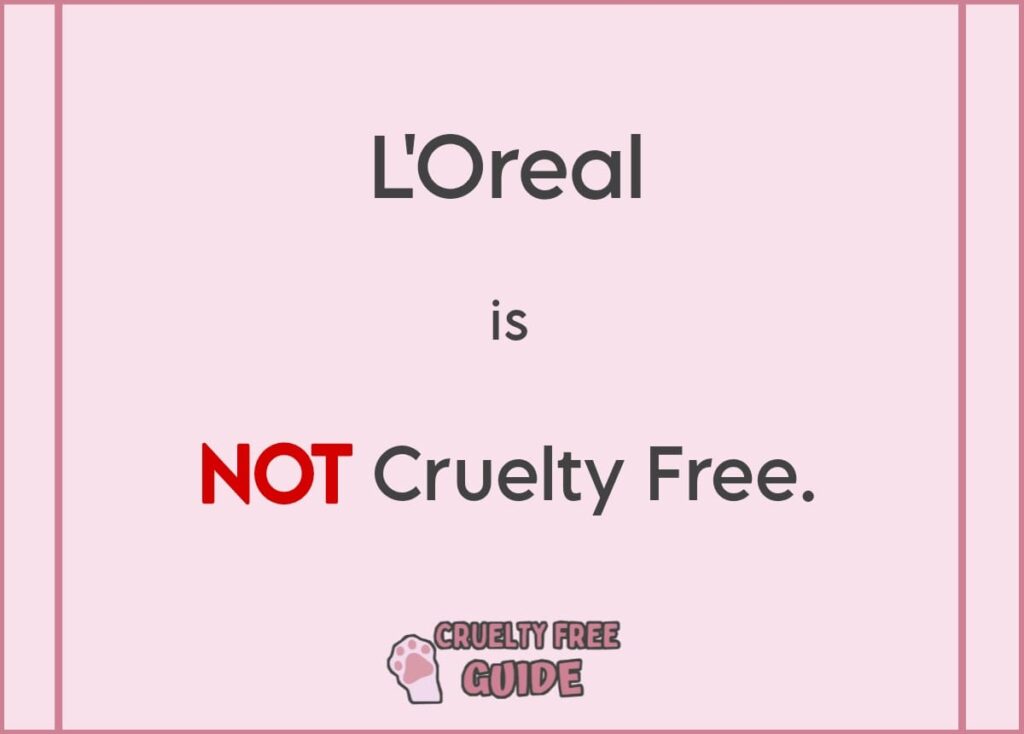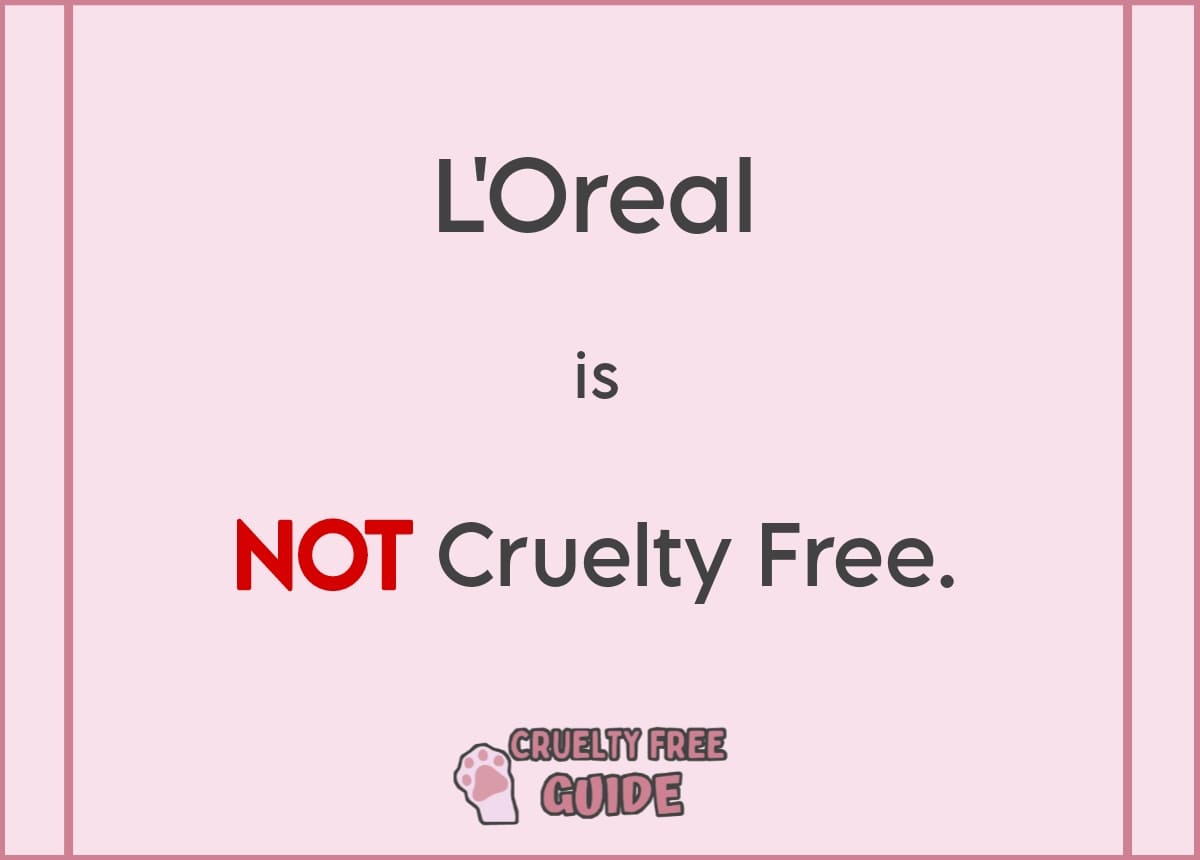
Is L’Oréal Cruelty-Free? A Deep Dive into Their Animal Testing Policies
The question of whether L’Oréal is cruelty-free is a complex one, often debated by consumers and animal rights advocates alike. As one of the world’s largest beauty companies, L’Oréal’s practices are under constant scrutiny. This article aims to provide a comprehensive and factual overview of L’Oréal’s animal testing policies, their current stance, and what it means for conscious consumers. Understanding the nuances of their policies is crucial for making informed purchasing decisions. The beauty industry is constantly evolving, and with it, so are consumer expectations regarding ethical and sustainable practices. Determining whether a brand like L’Oréal aligns with these values requires careful examination.
L’Oréal’s Official Stance on Animal Testing
L’Oréal officially states that they do not test their products on animals anywhere in the world. This declaration is prominently featured on their corporate website and in their communications. They emphasize their commitment to alternative testing methods and their investment in research to eliminate the need for animal testing. However, the reality is more nuanced due to regulations in certain countries and the nature of their supply chain.
Understanding the Nuances: Regulations and Third-Party Testing
While L’Oréal claims not to conduct animal testing directly, their products may be subject to animal testing by regulatory authorities in countries where it is legally required. China, for example, historically mandated animal testing for imported cosmetics. While significant progress has been made to relax these requirements, certain products may still fall under this mandate. This is a crucial point when considering whether L’Oréal is cruelty-free.
It’s also important to consider that L’Oréal may rely on third-party suppliers who conduct animal testing on ingredients used in their products. Although L’Oréal may not directly conduct these tests, their supply chain could indirectly contribute to animal testing. Transparency in the supply chain is therefore a key factor in assessing a brand’s true commitment to being cruelty-free.
Alternative Testing Methods and L’Oréal’s Investments
L’Oréal has invested significantly in developing and validating alternative testing methods. These include in-vitro testing (using human cell cultures), reconstructed skin models, and computer modeling. They actively collaborate with research institutions and regulatory bodies to promote the adoption of these alternatives globally. This commitment demonstrates a proactive approach to reducing and ultimately eliminating animal testing. L’Oréal’s dedication to these alternatives is a significant factor to consider when evaluating their cruelty-free status.
The company’s research and development efforts are focused on creating innovative testing methodologies that can accurately assess the safety and efficacy of cosmetic ingredients and products without resorting to animal testing. This includes participating in collaborative projects and funding research initiatives aimed at advancing the science of alternative testing.
L’Oréal and China: A Changing Landscape
China’s regulations regarding animal testing have been a major point of contention for cosmetic companies claiming to be cruelty-free. Historically, all imported cosmetics sold in China were required to undergo animal testing. However, recent changes in regulations have provided some exemptions for certain products manufactured in China. While these changes are a step in the right direction, they don’t eliminate the need for animal testing entirely.
Specifically, cosmetics manufactured in China and classified as “ordinary cosmetics” (such as shampoos, makeup, and skincare) may be exempt from mandatory animal testing, provided they meet certain requirements. However, “special cosmetics” (such as hair dyes and sunscreens) may still be subject to testing. Furthermore, products sold through e-commerce platforms may also be subject to different regulations. The situation is complex and requires constant monitoring to understand the evolving landscape.
Certifications and Third-Party Verification
L’Oréal is not currently certified by any major cruelty-free organizations such as Leaping Bunny or PETA. These organizations have strict criteria and audit processes to ensure that companies meet their standards for being cruelty-free. The absence of such certification raises questions for consumers who rely on these labels to make informed purchasing decisions.
Many consumers look to these certifications as a reliable way to verify a company’s claims about being cruelty-free. The rigorous standards and independent audits provide assurance that a company has taken all necessary steps to avoid animal testing at every stage of production. While L’Oréal may have its own internal policies and procedures, the lack of third-party verification can be a concern for some consumers.
Analyzing L’Oréal’s Transparency
Transparency is crucial when assessing a company’s commitment to ethical practices. L’Oréal provides information about its animal testing policies on its website, but the level of detail and clarity could be improved. Providing more specific information about their supply chain, their efforts to influence regulatory changes in countries like China, and the extent to which they audit their suppliers would enhance their transparency.
Consumers are increasingly demanding greater transparency from brands, wanting to know not only what a company says but also what it does. This includes providing detailed information about the sourcing of ingredients, the manufacturing processes, and the company’s efforts to minimize its environmental and social impact. A lack of transparency can erode consumer trust and make it difficult to assess a company’s true commitment to ethical values.
The Consumer Perspective: Making Informed Choices
Ultimately, the decision of whether to purchase L’Oréal products rests with the individual consumer. By understanding the complexities of L’Oréal’s animal testing policies, consumers can make informed choices that align with their values. Consider the following factors:
- L’Oréal’s official statements: While they claim not to test on animals, consider the nuances of regulations in certain countries.
- Third-party testing: Be aware that their products may be subject to animal testing by regulatory authorities.
- Alternative testing methods: Acknowledge their investment in and commitment to alternative testing methods.
- Transparency: Evaluate the level of transparency in their supply chain and their efforts to influence regulatory changes.
- Certifications: Note the absence of certification from major cruelty-free organizations.
By weighing these factors, consumers can determine whether L’Oréal’s practices align with their personal values and make purchasing decisions accordingly. [See also: Cruelty-Free Beauty Brands to Support] [See also: The Truth About Animal Testing in Cosmetics]
Conclusion: Is L’Oréal Truly Cruelty-Free?
The question of whether L’Oréal is cruelty-free doesn’t have a simple yes or no answer. While the company has made significant strides in developing alternative testing methods and claims not to conduct animal testing directly, their products may still be subject to testing by regulatory authorities in certain countries. Their lack of certification from major cruelty-free organizations and the complexities of their supply chain add further layers of complexity. Consumers must carefully weigh these factors and decide whether L’Oréal’s practices align with their values. The ongoing evolution of regulations and testing methods means that this is a topic that requires continuous monitoring and evaluation. Ultimately, informed consumers can drive positive change by supporting brands that prioritize ethical and sustainable practices. The goal is to create a beauty industry where animal testing is a thing of the past, and all products are produced in a responsible and ethical manner. Understanding where L’Oréal stands on this issue is a step in the right direction. Determining if L’Oréal is cruelty-free depends on your personal interpretation of their practices and your own ethical standards. The definition of cruelty-free can vary, so it’s important to research and understand what it means to you. The debate around whether L’Oréal is cruelty-free highlights the complexities of ethical consumerism in a globalized world. Many consumers are concerned about whether L’Oréal is cruelty-free because of the brand’s size and influence. If L’Oréal is cruelty-free or not has become a significant question for ethical shoppers. Consumers are urged to stay informed and do their own research to determine whether L’Oréal is cruelty-free. The question of whether L’Oréal is cruelty-free continues to be a topic of discussion among beauty enthusiasts. Whether or not L’Oréal is cruelty-free is a personal decision based on available information. This article explores whether L’Oréal is cruelty-free and provides a detailed analysis of their policies.

